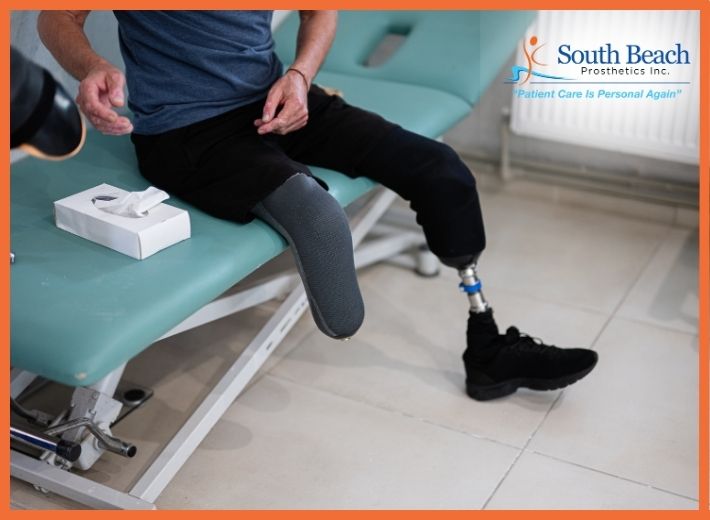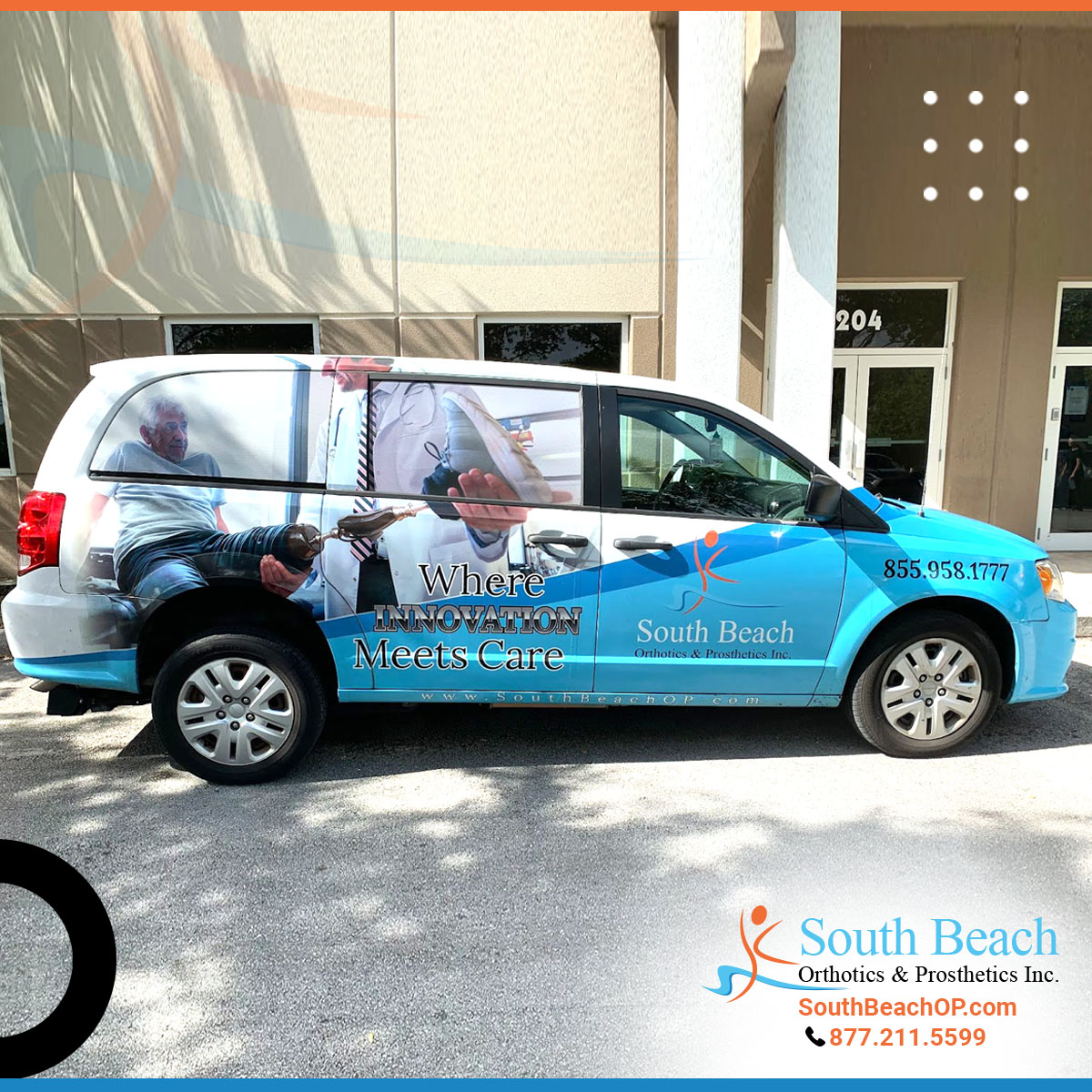Each year, nearly 100,000 Americans undergo a leg amputation, over half of which are due to diabetes and peripheral artery disease. However, COVID-19 has had an impact on the numbers. Learn the reasons why by reading below. Remember, if we can get your questions answered or help you in your journey – we have 1001 ways to do so!
Even some otherwise healthy COVID patients are suffering one of the disease’s most serious complications — circulatory crises caused by clotting that strangles blood flow to the limbs.
When Candice Davis contracted COVID-19 in August, she quarantined herself in her South Philadelphia apartment and settled in for what she thought would be a short recovery.
But within days, Davis, 30, was in the ER, shocked by the directive she’d just gotten from a doctor: Go on a ventilator, or risk death.
Three weeks later, she woke up to her mother, Paige, standing over her. “Baby, I know this is going to be sad,” she said, “but you have to make a decision.”
In the weeks she lay unconscious — during which doctors had to transfer her from a ventilator to an ECMO machine, a device that pumps oxygen directly into the blood — Davis had developed life-threatening heart complications, and then circulatory issues in her arms and legs. Now, her mother told her, she was again facing a life-or-death decision. For her to survive, doctors would have to amputate her arms.
“I said, If my arms gotta go, they gotta go,” she said. “It’s my life.”
Davis is one of a small, but growing, population of COVID-19 patients who suffer one of the disease’s most serious complications — circulatory crises caused by clotting that diminishes blood flow to the limbs. Tissue dies and infection sets in, doctors said. The affected limbs have to be removed for the patient to survive.
The risks are highest for older people with preexisting conditions like diabetes and peripheral arterial disease. And at the same time, doctors warn, they are having to perform more amputations on people with diabetes, some of whom didn’t have COVID but who may have avoided needed medical care during the pandemic.
But as Davis illustrates, it can happen even to young, healthy people who do not have diabetes or other preexisting conditions.
Now, with COVID-19 cases rising and the omicron variant sparking new fears, Davis is telling her story to urge other young people to take the pandemic seriously.
In the weeks after Davis woke up, she lost her arms below the elbows, a leg below the knee, and part of one foot.
Davis, who was not vaccinated when she contracted the virus, is urging others to get the vaccine. “I know it’s scary — I was scared, too,” she said. “I didn’t have time to get to it. But get the vaccine — you don’t want to lose your limbs. And, most importantly, you don’t want to lose your life.”
Amputations have become more common during COVID-19, according to the Amputee Coalition, a support and advocacy group for people with limb loss, in part due to the virus’ potential to cause increased blood clotting. The details of how COVID-19 causes clotting are still being researched, said Julia Glaser, a Penn Medicine vascular surgeon who treated Davis, but the virus appears to damage the lining of the blood vessels that ensures blood flows easily through the body. In some people, this can result in large clots that can cause strokes. In patients like Davis, tiny, virtually undetectable clots can form throughout the body. In a limb, they can hinder circulation enough that it dies and must be removed to save the patient’s life.
One study from July 2020 found that COVID-19 infections increased the likelihood of a leg amputation by 25%, and that the risk was greater for people who also experienced pulmonary or systemic complications from their infection. People with cardiac conditions and diabetes are at particular risk.
Because blood wasn’t adequately circulating through Davis’ limbs, Glaser said, the tissue started to die and infection set in. She needed life-support medications to keep her blood pressure up at a sustainable level. That’s when Davis and her doctors made the decision to amputate.
“I was sad, but I’m more than my arms. I’m more than my limbs,” Davis said. “If they gotta go for me to live …”
It was harder to accept the lower-limb loss.
Two months after his hospitalization, his extremities were swollen and black from lack of circulation. On June 23, 2020, he lost his left leg below the knee and part of his right foot. About a week later, doctors amputated both his hands.
Torregosa wasn’t fully conscious in the period before or immediately after his surgeries. His first clear memory after the amputations, he said, was waking up and trying to push himself up in bed.
“I tried to push my hands into the bed, but I could not,” he recalled. “I said: ‘What happened? Where are my hands?’”
Then he realized he had lost much of his left leg too.
Both Davis, who worked as a flight attendant, and Torregosa, a former employee at Children’s Hospital of Philadelphia, had no preexisting conditions before they contracted COVID. But for people with conditions like diabetes, the risks of circulatory complications and amputations are even higher.
People with diabetes — a condition that affects circulation and requires careful medical monitoring entirely aside from COVID — have borne a heavy burden during the pandemic. A November 2020 study of diabetes patients with foot problems found they were 10.8 times more likely to have any amputation during the pandemic than before it, and almost 13 times more likely to need a major amputation, defined as removal of a leg below the knee or higher.
Too many amputations over the last two years were not a result of COVID-19, though, and could have been avoided, said Ajaykumar D. Rao, a Temple Health physician with expertise in internal medicine, endocrinology, and diabetes. Amputations were already increasing before COVID-19 came to the United States, he said, and the pandemic’s lockdowns and restrictions, along with people’s fears of exposure to the virus, led people with diabetes to skip routine care.
“People early in the pandemic were afraid to come into the hospital even though they knew there was something wrong with their feet or their limbs,” Rao said. “There’s a delay in detection.”
As Davis recovers from amputation, she said she is excited to get healthier, to walk on prosthetics and to live as independently as possible.
Her brother, Ali, visits her every day. He contracted COVID around the same time as his sister, but he had been vaccinated and had a far milder case.
“That’s why people need to be vaccinated: My brother lost his taste and smell for a while,” Candice Davis said. “I lost my limbs.”
Davis’ mother, Paige, works in housekeeping at UCHealth Memorial Hospital Central in Colorado Springs, where Candice and Ali grew up. Paige Davis has worked alongside doctors and nurses for 15 years, and saw the pandemic’s devastation up close. But she was stunned by how quickly her daughter neared death.
“It was hurtful. It was scary. I work at a hospital, and to have my child go through this — I didn’t know how to react to it at all,” Paige Davis said. “It was overwhelming. All we did was start praying. I have my moments when I’m by myself, when I fall apart. You stand back up and shake it off, and keep on moving.
“The strongest one out of all of us is Candice. She has her crying days, she has her good days, but she’s stronger than all of us.”
She flew to Philadelphia as Candice was placed on the ECMO machine in August and comes back for visits as often as she can. The family spent Thanksgiving weekend together at Penn Presbyterian.
Davis, who has a sociology degree from Colorado State University, has long thought about nursing. Experiencing how her nurses cared for her — and forming friendships with them — has only cemented her goal.
“I know I can’t do some nursing, but talking to the nurses in here — some have explained to me there are other areas of nursing I can get involved in,” she said. “I’m very into anatomy, physiology, women’s health — watching them, seeing what they do, it’s like, I can do that.”
Her immediate goal is inpatient rehab at Magee Rehabilitation — where Torregosa spent more than two months last summer.
Inpatient rehab can take a few weeks or up to several months and typically continues with therapy at home and outpatient rehabilitation for months after that, said Paula Bonsall an occupational therapist and therapy supervisor at Magee Stroke and COVID programs. With amputees also recovering from a severe case of COVID-19, the first step is simply restoring basic strength.
“Even the ability just to sit up is impaired because their chest muscles are weak, their respiratory system is weak, they’ve been in bed for how long, right?” said Bonsall. “We kind of start with the basics.”
Torregosa could barely raise his arms away from his body at first, he said.
As he gained strength, he learned to get from the bed to a chair, to stand with assistance, and then to use his new prosthetics.
He started by walking in a harness that supported his weight.
“Thirty steps,” he remembered, “back and forth, back and forth.”
Torregosa received body-powered prosthetic hands, which he can open and close by contracting or relaxing muscles like those in the shoulder or tricep, Bonsall said.
“They have to sort of learn cognitively as well as physically how to trigger those muscles in order to use it appropriately,” she said.
By the time he left Magee in October 2020, Torregosa could walk laps on his prosthetic legs without additional support. He can eat on his own, he said, and has started golfing and even resuming some martial arts. Torregosa credits his Catholic faith with sustaining him and frequently reflects on Jesus’ suffering.
“Don’t focus on something you don’t have that you want,” Torregosa said. “As long as you have air in the lungs, you’re alive. That’s just what matters.”
Davis, too, has relied on her faith, and parishioners from her North Philadelphia church who visit almost daily. So do friends from Pinky Promise, a national Christian women’s group that Davis joined before the pandemic.
“If I were with them, I would say, Take it a day at a time,” Torregosa said of others who have suffered amputations as a result of COVID-19. “That’s how I do it. Even now, I’m just alive for today because today’s plenty already.”
South Beach Prosthetics stands with you every step of the way. Wherever you are in your journey, you can count on our support & expertise to get all the prosthetic care you need. Get in touch with us today at (888) 819-4721 to learn more about how we can help. Find our Facebook community here.
Reference: [https://www.inquirer.com/health/coronavirus/covid-amputations-circulation-ventilator-complications-diabetes-20211203.html]








